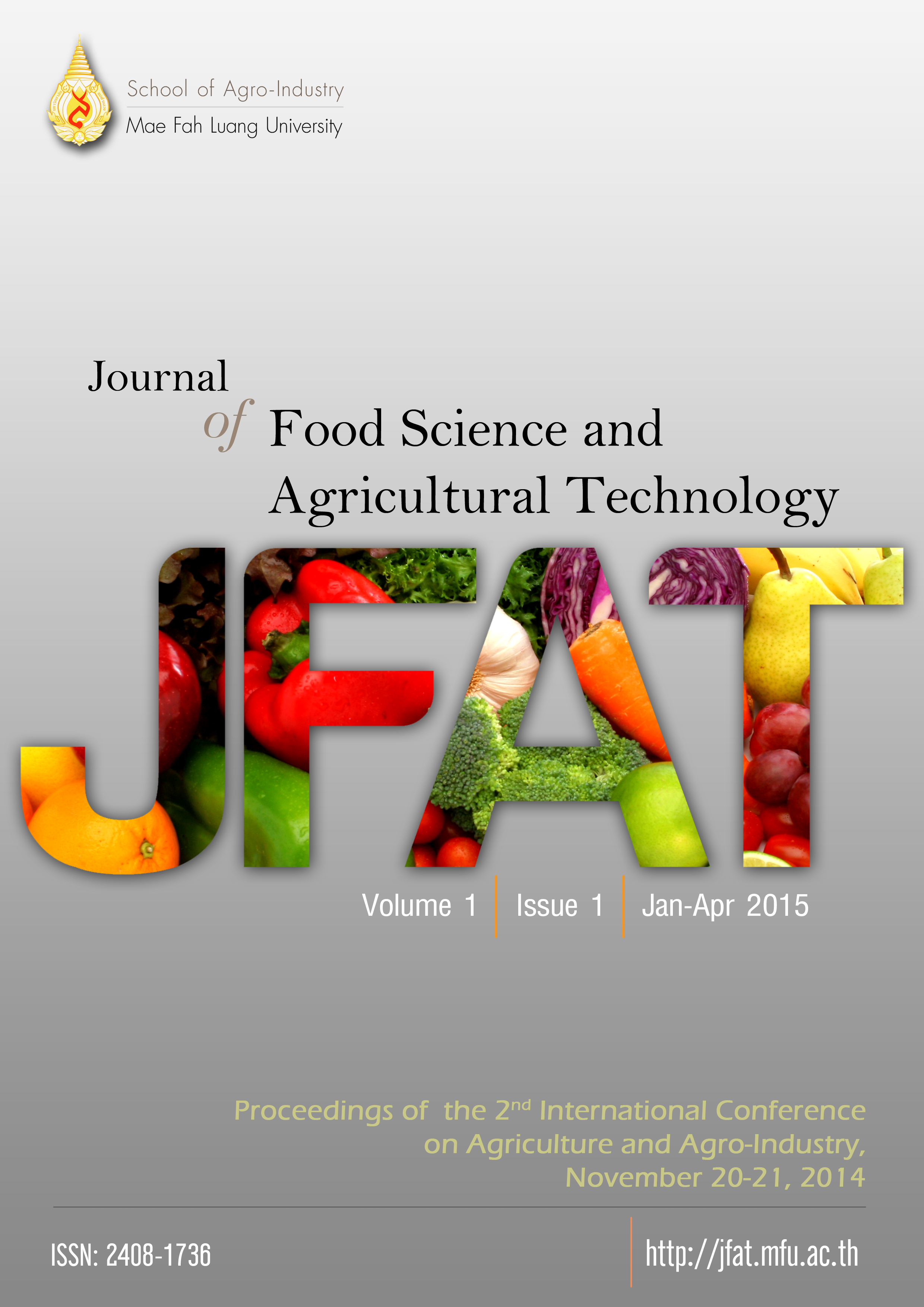Abstract
Proteins in jellyfish (Lobonema smithii) are mainly collagen. The research was to compare the physicochemical and functional properties of jellyfish (Lobonema smithii) protein hydrolysate produced using bromelain (eb-JPH) or hydrochloric acid (a-JPH) hydrolysis. The bromelain concentrations used were 5, 10 and 15% (w/w) and hydrolysis times of 3, 6, 12 and 18 h at 50oC. Hydrochloric acid (1 N or 6 N) and hydrolysis times of 12 and 24 h at 95oC were used to produce a-JPH. Results of acid hydrolysis showed increased degree of hydrolysis (%DH) of a-JPH depending on HCl concentration. The duration of hydrolysis (6 and 12 h) had no impact on %DH. The highest %DH obtained was at 6 N HCl for 24 h. Neither bromelain concentration nor hydrolysis time had impact on %DHs of eb-JPHs. Functional properties (foaming and emulsifying properties) of eb-JPHs were higher than those of a-JPHs. The foaming and emulsifying properties of eb-JPHs increased with increasing bromelain concentration. However, the increased hydrolysis time increased only foaming properties. The scavenging activity of 1,1-diphenyl-2-picrylhydrazyl (DPPH) of eb-JPHs had higher than that of a-JPHs. This can be concluded that eb-JPHs produced better functional properties than a-JPHs

